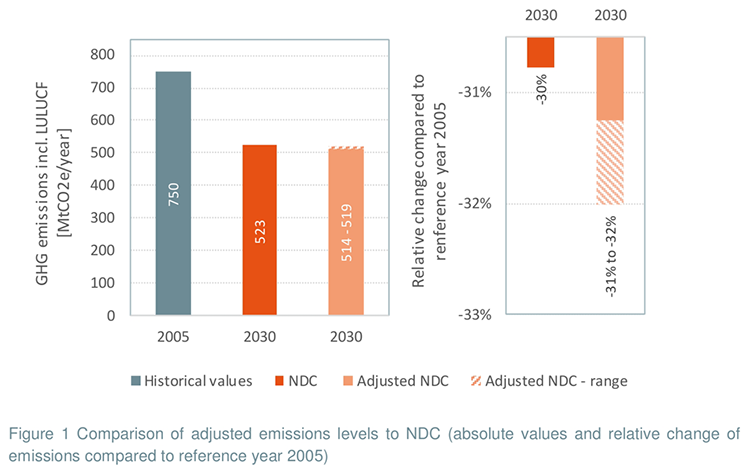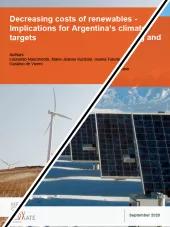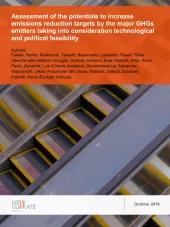This case study presents the potential impact of lower battery and renewable energy costs projections in Canada's NDC emissions target.
Main findings
The costs for renewable electricity generation and electric vehicles have dropped since the NDCs were developed, and future cost projections also decreased as a result. Wachsmuth and Anatolitis (2018) suggest a simple method to estimate increased RE capacities and EV penetration resulting from these cost decreases. The method assumes that lower battery costs lead to a higher market uptake of EVs and that the savings from decreased RE capacity cost are reinvested in the same technology. Our analysis applies the method to Canada, using country specific data sources for costs and expectations on technology development. It aims to present the potential impact of taking renewable generation and storage cost reductions into account to raise ambition of NDCs, as one element of various to consider for NDC revisions. 
Our results suggest that by considering technology cost developments of wind, solar PV and batteries since 2017, Canada could increase the ambition of its NDC target. Assuming that cost savings in those technologies would be reinvested in the same area, the NDC target of 30% below 2005 levels could be reduced by 1 – 2 % points, or by 4 to 9 MtCO2e in 2030 in absolute terms.







